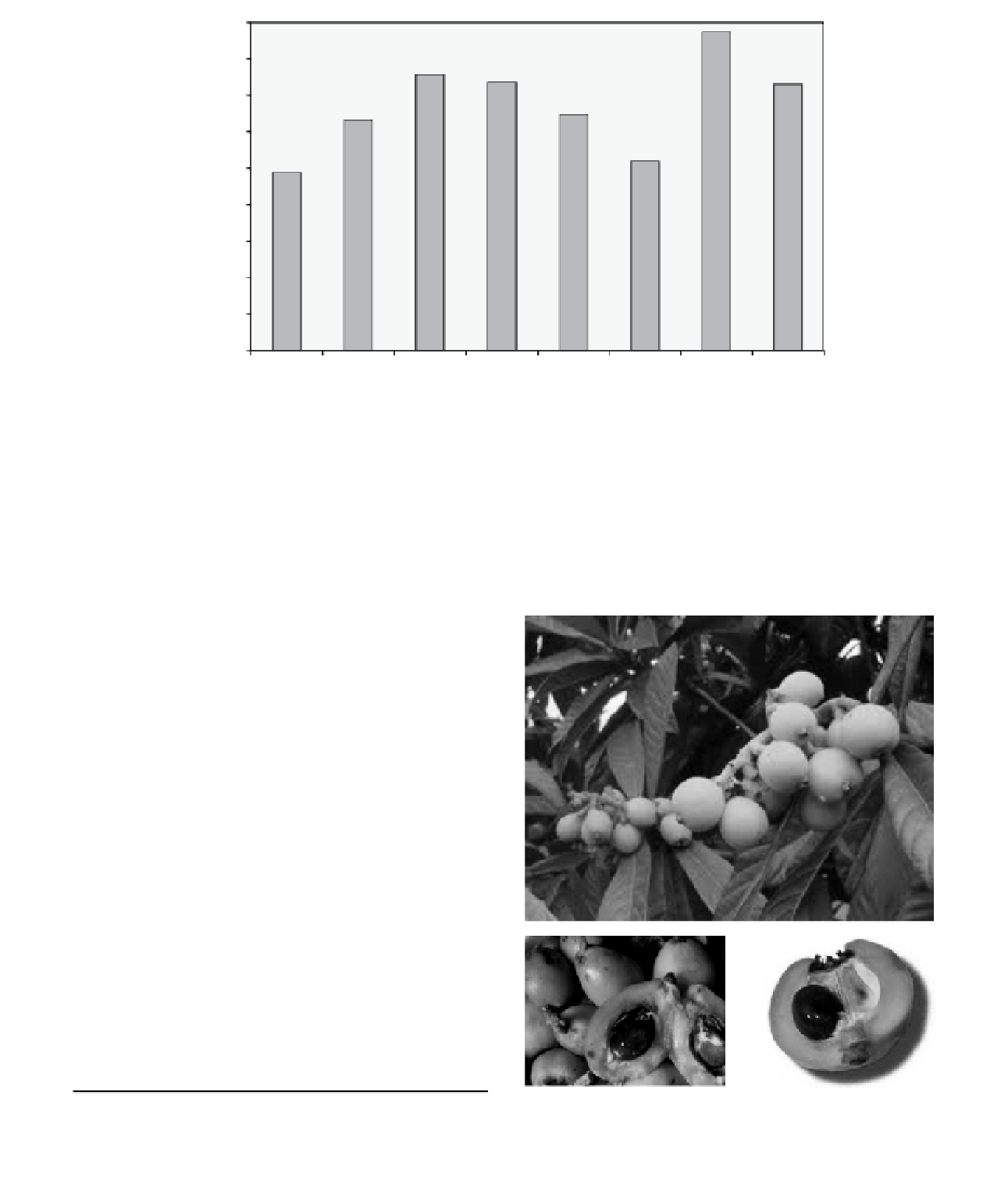Agriculture Reference
In-Depth Information
180
160
140
120
100
80
60
40
20
0
'Katha' 'Bagwari' 'Umran' 'Chhuhara' 'Illaichi'
'Karaka' 'Mundia
Murhra'
'Narma'
Figure 31.2.
Vitamin C content of selected Indian jujube cultivars (source: Adapted from Pareek, 2001; Pareek
et al., 2009).
Its leaves have been reportedly used for treatment of skin
diseases, diabetes, chronic bronchitis, coughs, phlegm, ul-
cers, and cancer (De Tommasi et al., 1992; Ito et al., 2000).
Loquat is considered highly nutritious, containing vitamins
A and C, minerals (potassium, phosphorus, and calcium),
and sugars (Karadeniz, 2002).
Japan, Pakistan, and Turkey were the other leading loquat
producing countries (Lin, 2007). The 2008 production in
Pakistan was 10,479 metric tons, with over 95% of area
under cultivation in two provinces: Punjab and Khyber
Production and varieties
The worldwide loquat production was 549,220 metric
tons in 2006 (Lin, 2007). China led with 453,600 metric
tons or 82.5% of the total world production. Spain, India,
Table 31.3.
Phenolic,
α
-tocopherol, and
β
-carotene contents of four selections of Chinese
jujube (fresh-wt basis).
Conc. (mg/100 g)
1
Compounds
Catechin
2.46-3.76
Caffeic acid
0.23-0.57
Epicatechin
0.19-0.48
Ferulic acid
0.00-0.22
Rutin
0.88-3.60
p
-Hydroxybenzoic acid
0.10-0.18
Chlorogenic acid
0.11-0.27
α
-Tocopherol
0.00-0.07
β
-Carotene
7.0-35.0
1
Except for
β
-carotene, in
μ
g/100 g.
Source: Adapted from San and Yildirim (2010).
Figure 31.3.
Fruit-bearing loquat tree (top) and cut
fruits (bottom).


Search WWH ::

Custom Search